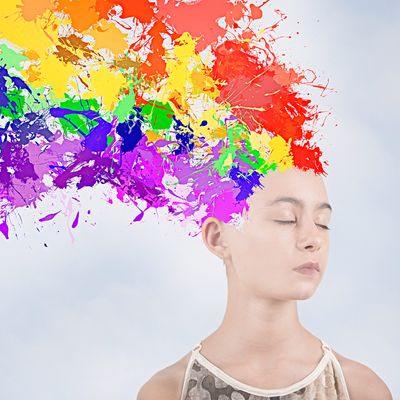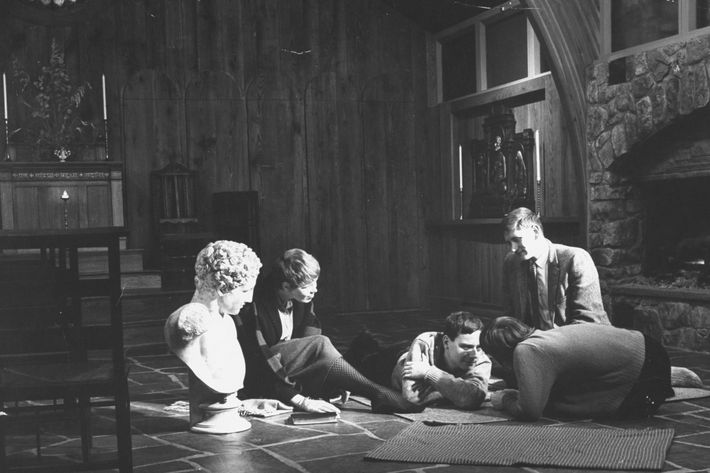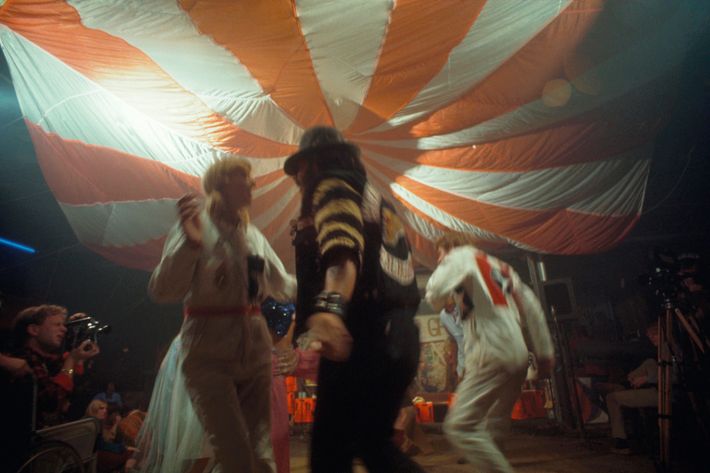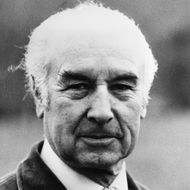
How do you comfort the dying? You could try giving them LSD. It’s not a facetious idea. In March 2014, Dr. Peter Gasser, a Swiss psychiatrist, published the results of using LSD alongside talk therapy for 12 patients with terminal illness. It was the first controlled trial of the drug in over 40 years. And it helped. The patients who embarked on carefully supervised LSD trips, Gasser reported, talked afterward about emotions they had never before expressed and reported feeling better — “their anxiety went down and stayed down.”
One of Gasser’s subjects, an Austrian social worker named Peter with a degenerative spinal condition, said, “I had what you would call a mystical experience, I guess, lasting for some time, and the major part was pure distress at all these memories I had successfully forgotten for decades.” But he was talking about them to someone else for the first time. “I will say I have been more emotional since the study ended, and I don’t mean always cheerful. But I think it’s better to feel things strongly — better to be alive than to merely function.”
In fact, it was an old idea to comfort the dying with psychedelic drugs, but half a century of prohibition froze research to a standstill — until now. The British novelist Aldous Huxley, author of The Doors of Perception, was an early champion of acid therapy. In 1958, he wrote to Humphry Osmond, the physician who had introduced him to LSD and mescaline, suggesting a research project that would involve “the administration of LSD to terminal cancer cases, in the hope that it would make dying [a] more spiritual, less strictly physiological process.” The last rites, Huxley thought, “should make one more conscious rather than less conscious.” On this subject Huxley walked the walk: On his deathbed in Los Angeles five years later, he asked his wife, Laura, to give him a dose of acid. She did so, staying at his bedside and talking to him for hours until he breathed his last. In a remarkable letter to his brother a few days later, Laura reported that it had been “the most serene, the most beautiful death.” Then she ended her loving report by asking, “Now, is his way of dying to remain our — and only our — relief and consolation, or should others also benefit from it? What do you feel?”

Such ideas in the popular culture of the 1950s and 1960s were the humane, optimistic version of the general fascination with hallucinogens. The dark side of that fascination is exemplified by the CIA’s notorious MK Ultra program, which, according to a 1985 Supreme Court judgment describing it, “was established to counter perceived Soviet and Chinese advances in brainwashing and interrogation techniques,” and concerned itself with “the research and development of chemical, biological, and radiological materials capable of employment in clandestine operations to control human behavior.” In other words, the CIA performed illegal human experiments, which included giving unwitting subjects doses of LSD.
But in the late 1960s, LSD and other hallucinogenic drugs were outlawed in the United States and the U.K., effectively rendering clinical experiments impossible — lawful ones, at least. According to many psychiatric pharmacologists, this set back research into psychiatric therapies for decades. Only after half a century is scientific research into the effects of LSD and other psychedelics such as psilocybin (the active ingredient of magic mushrooms) picking up again. Why? For one thing, depression is now the leading cause of disability on the planet, according to the World Health Organization, and there is a need for better medications than those so far provided by the pharma industry. As Dr. Robin Carhart-Harris, a researcher in neuropsychopharmacology, told the writer Ed Cumming, “Given the magnitude of the problem, there’s huge potential that psilocybin, and maybe other psychedelics, will be a big help.”

Depression is not the only condition potentially treatable by these once-forbidden compounds. They seem to be of potential help in anxiety and nicotine or alcohol dependence as well. According to one intriguing scientific meta-analysis published in 2012, “A single dose of LSD, in the context of various alcoholism treatment programs, is associated with a decrease in alcohol misuse.” A similar approach might work for those who love cigarettes too much: “Psilocybin may be a potentially efficacious adjunct to current smoking cessation treatment models.” Even the ordinary recreational use of psychedelic drugs in the American population, it seems, is associated with reduced psychological stress, and less risk of suicide. The studies are mounting up. None are definitive, but the implications all point the same way. The potential benefits of these substances, many physicians and researchers now say, demand a change in their legal status.
So why do psychedelics seemingly work in therapeutic interventions? One intriguing hypothesis seems quite compatible with the teachings of the tradition in psychology that runs from the Stoics to cognitive behavioral therapy. Brain-imaging studies performed on patients who have taken psychedelics show a measurable, concrete phenomenon: a bioelectrical reality underlying an age-old metaphor. We often say that people who are depressed or addicted have thoughts that run in certain well-worn grooves — psychological “ruts” that repetition only strengthens. How do you get out of such a rut? As we have seen, the psychological tradition recommends that we try to recognize repetitive bad thoughts, to disrupt our patterns of automatic thinking. What psychedelics do is actively disrupt the overall organization of neuronal firing patterns in the brain, a process known as broadband cortical desynchronization.

That sounds scary, but for some people it’s just what is needed. If a “rut” is an entrenched pattern of neuronal firing, then something that disrupts patterns will help smooth it out or reset it. “What you see with psychedelics is this dismantling of organization, a scrambling in the cortex,” Carhart-Harris explains. “These drugs introduce a kind of storm, but in the context of treating a pathology, it can be a useful storm, a reboot of the system.” So it appears that psychedelics can produce desirable changes in experience by following the first piece of advice offered by tech-support people the world over: Have you tried turning it off and then on again?
The resurgence of therapeutic drug research has been called the psychedelic renaissance, but LSD was not invented to alleviate depression. It seems obvious now that consciousness-altering drugs might change the experience of people with a troubled consciousness. But the Swiss chemist who discovered the trippy molecule lysergic acid diethylamide was looking for something else altogether. Albert Hoffman stumbled upon LSD in 1938 while researching possible medications to stimulate breathing and circulation. It was no good for that purpose, so Hoffman set it aside. Only five years later did he decide to reexamine it, and while doing so, he accidentally got some into his system. He liked it so much he took it again deliberately. And so began the psychedelic age.
Hoffman thought LSD was “medicine for the soul,” just as many modern psychiatric researchers suspect it might be. But that potential was only discovered once it had been repurposed — taken out of its original context as a possible stimulant and reconsidered for recreational intoxication, and, ultimately, therapy. If an idea looks moribund or simply irrelevant, sometimes it just needs to be slotted into an entirely new game to come alive once more and find vindication.
Steven Poole’s Rethink: The Surprising History of New Ideas, published by Scribner, hits book stores this week.